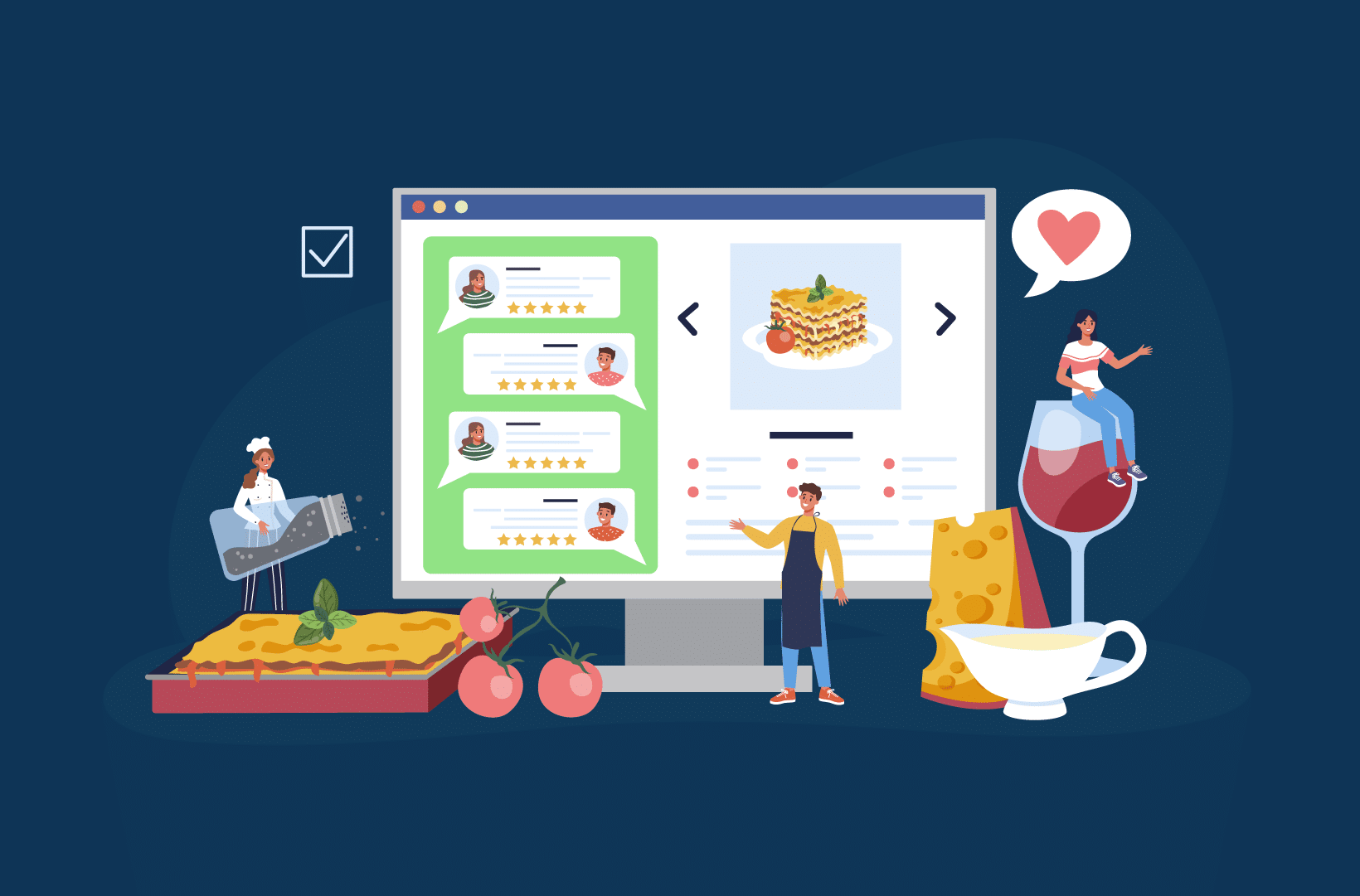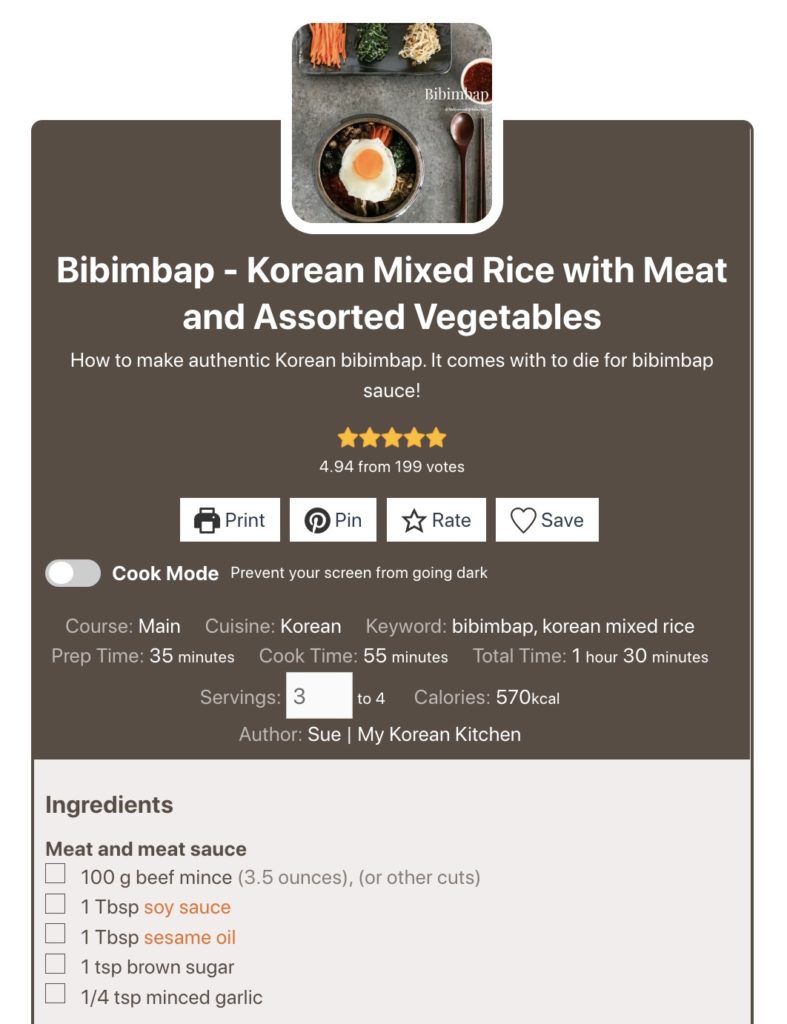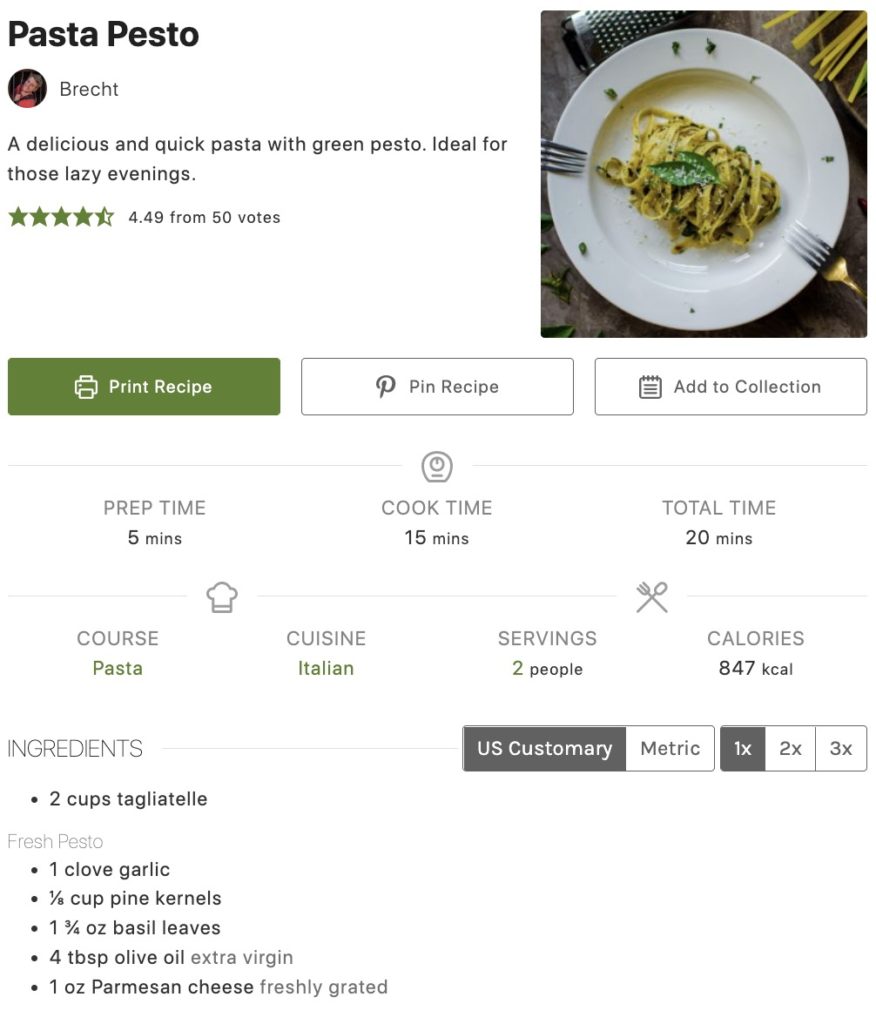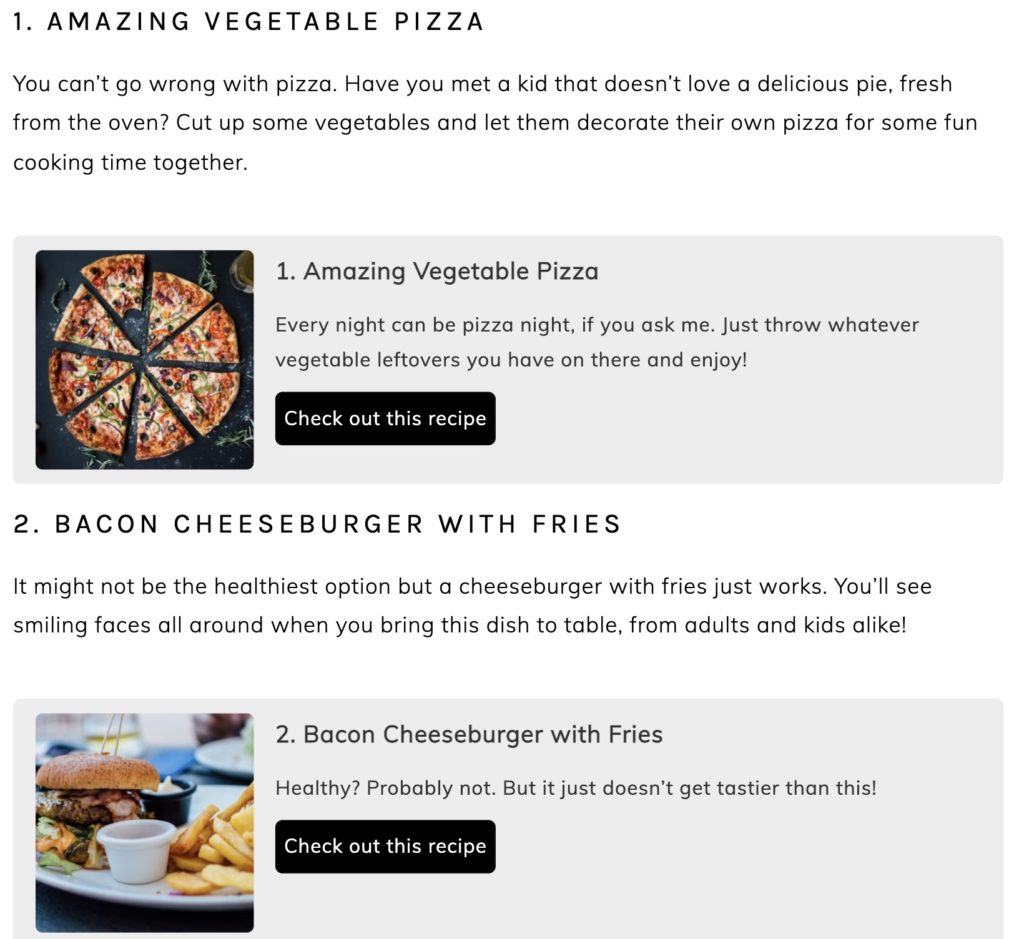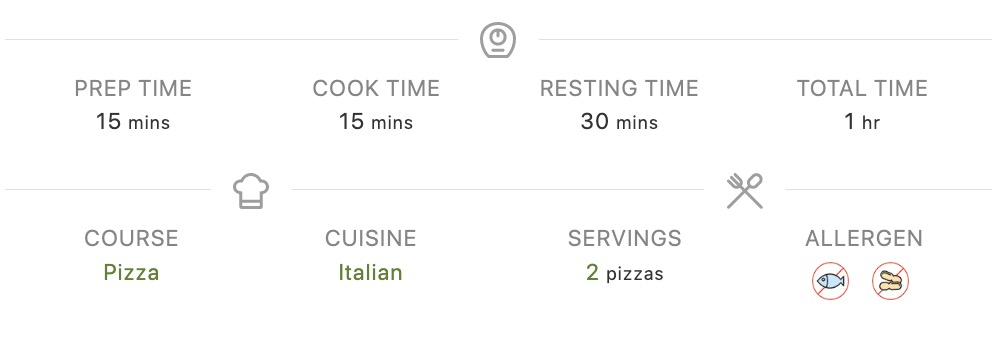Have you ever wondered where food bloggers get their recipes and recipe ideas from? What are their sources, and how are they able to post so frequently?
Food content creators or bloggers are always coming up with new and fantastic recipes. Part of the job is knowing where to look for inspiration! There are many good sources out there, including cookbooks, magazines, and friends and family who are willing to share their secrets.
One thing is sure: if you want to be a successful food blogger, you need to have a reliable source of recipes you can use as inspiration to create your own dishes. In this article, we will explore where to find new recipes, how to make them your own, and how to share them with the world.
Why Do Food Bloggers Need so Many Recipes?
The most successful food bloggers and food influencers regularly update their websites and social media feeds with new recipes. The reason is simple: They need to stay competitive and increase their chances of monetization, an important factor if you’re considering turning your food blog into a full-time job.
Another benefit of uploading frequently is that the more good content you publish, the higher your domain authority will be. This, in turn, increases your chances of ranking and getting more visitors to purchase your recommended products (using Amazon affiliate links, buying your recipe books, etc.) Not to mention, a high-traffic site also has the potential to attract some great sponsors, which can also lead to more of your target audience seeking you out.
Lastly, publishing regularly also keeps your audiences engaged and interested in you as an original content creator. You want to have fresh content you can promote on social media because it’s one of the main keys to becoming a successful blogger. In fact, 42% of bloggers who publish 2-6 times each week report strong results compared to 29% who post weekly and just 16% that post monthly.
In short: the more recipes you publish, the more opportunities you will have to gain new followers, get your affiliate marketing links to perform better, and attract better website ads and sponsorships. And, because Google now shows recipes as search results, if you get the SERP right, you can get more traffic than your competitors and become much more competitive!
Where Do Food Bloggers Find Their Recipes?
There are many places where recipe blog beginners can find good ideas. For example, other recipe websites, forums, social media, sponsored posts, cookbooks, and magazines – not to mention treasured family recipes that have been passed down! The easiest, and most popular option nowadays, is to search the internet for new recipes.
In fact, more than 70% of adults use social media for recipes instead of cookbooks. This means that the internet is not just the best place to find things to cook – it’s also the perfect platform to share your own recipes and drive traffic to your website, as there will be tons of people looking for the best food ideas, too.
Is It Okay to Use Other People’s Recipes?
Using someone else’s recipe exactly as it is and without changing anything is considered to be bad practice, and won’t make you any friends in the food blogging community. However, being inspired by a dish and adding your own twist to it is perfectly acceptable!
There are many reasons why a blogger might want to use another original recipe as a base for creating their own. For example, they could use the same steps they see from someone making a lasagna dish to create an eggplant parmigiana. Or they might want to recreate a dish but try different ingredients or change the recommended quantities.
This is the main reason why many people who are just starting a food blog and don’t have much experience in certain cuisines use other food recipes as inspiration. They are a great starting point. The key here is to take the elements you like from other creators but always make an effort to combine your own research and experience so you can make a recipe your own.
Just remember that the more dishes you come up with, the more confident you’ll be with testing, adapting, and inventing new ones for your blog. And, what’s even better: once you’ve found and adapted your favorite recipes, you can help continue the cycle by publishing them on your blog for others to find and love, too!
Why Do You Need to Organize Your Recipes?
If you’re a food blogger, you’ll quickly realize that finding mouth-watering recipes to recreate is actually the easy part. After that, there is a more lengthy process you will need to follow to get your recipes out in the world. This process consists of:
- Planning and making your recipe: If you’re going to blog about food, you will probably want to add images, detailed descriptions, and a carefully designed step-by-step guide for all instructions. To turn your blog into a business, you will also need to do things like linking to affiliate products or talking to sponsors. All of this takes time to plan, so make sure you don’t skip this vital step.
- Testing and tweaking the recipe to your liking: You might have to try the recipe a few times before you get it precisely as you pictured it. Don’t worry; most bloggers go through a few iterations to make sure things are perfect! Don’t be afraid to test new things and tweak ingredients to create an original dish.
- Writing up the recipe: You should always include all the ingredients, servings, and step-by-step instructions with your recipe, so people can follow your process and recreate your dishes easily. Make sure your text is easy to read and follow!
- Food photography: Photos can help your creations stand out and help keep people engaged in your food blog. You don’t need expensive equipment to take great pictures (a smartphone is enough); just make sure you use natural light whenever possible and capture all steps in detail so you can fill your recipe with attractive images.
- Step-by-step video tutorials: If you’re going to include tutorial videos as part of your recipe page, make sure you film all steps of the process. You can always remove unnecessary bits, but you can’t go back in time and film that one step you missed!
- Formatting your recipe on your website: Lastly, you should always spend some time making sure the way you present your recipe is attractive and easy to follow. Make sure your recipes are categorized well on your website, so that site visitors can easily find new recipes that are interesting to them!
Now, as you grow your food blog, you’ll notice that the more recipes you have on your website, the trickier they are to organize. Which, in turn, can translate into your visitors having trouble finding what they are looking for! This affects the user experience and can detract people from coming back to your site (choosing, instead, to use a competitor’s). Not to mention, things like high bounce rates and poor UX can have a negative knock-on effect on SEO, meaning your website will be less visible in search engines.
If you want to become a full-time blogger, you need to make sure your audience can find the recipes they are looking for – and you can keep track of everything you’ve published, too! Good recipe organization is a must-have, but how can you promote it?
Luckily, there are a few tricks and tools you can use to keep your recipes and food creations in order. If you have a WordPress site, it’s super easy to categorize your content through categories and tags, which can be used by both you as a creator and your visitors. And, if you want to take things one step further, you can also add a specialized plugin built to manage recipes.
What is WP Recipe Maker?
WP Recipe Maker is a WordPress plugin that allows you to add beautiful SEO-optimized recipe boxes directly to your website. You don’t need to have any coding knowledge or design skills; the plugin does all the complex steps for you, so all you have to worry about is coming up with great recipes.
With WP Recipe Maker, you can add and customize everything you need to showcase your recipes all from the same location. For example, you can include cooking steps, images, videos, adjustable servings, nutritional information, calls to action (such as telling users to share the recipe on social media), and much more. The tool already comes with multiple templates you can personalize according to your needs, and it’s incredibly intuitive and very easy to use.
How Does WP Recipe Maker Help You Organize Your Recipes?
The WP Recipe Maker plugin lets you create beautiful recipe boxes which can be added anywhere on your website (you can do this using shortcodes or built-in buttons). A great way to organize recipes is to add them to their own blog post and then use categories for thoses posts.
Other helpful features include:
- An ‘add to collection’ button, which allows visitors to save their favorite recipes so they can refer back to them, organize a meal plan, or create a shopping list. Alternatively, there’s a button to print the recipe, too, for those who prefer to have a physical copy.
- Recipe roundups are another great feature offered by WP Recipe Maker that allows you to organize your creations by category. For example, you can create a roundup post containing all of your favorite gluten-free recipes. The plugin then automatically outputs all the metadata that Google needs to display your recipes in a carousel. It couldn’t be easier!
- With the full text search feature, users can navigate easily through your website and search for specific recipes, ingredients, and instructions using the standard WordPress search function.
- WP Recipe Maker also supports recipe taxonomies, so you classify all your creations more easily. You can also use this feature to specify things like the course and type of cuisine or to assign your recipes a difficulty level so visitors can choose those appropriate for their ability.
- The tool has an easy drag-and-drop interface, so anyone can use it easily. Recipes built using WP Recipe Maker are also optimized for speed and use minified and combined assets to make your pages load faster.
Help Your Audience Find New Recipes!
Food bloggers are constantly looking for new recipes to experiment with and share with their followers. They know that they need to keep their audience engaged and also be able to reach out to new people through good SEO – so updating content regularly becomes paramount. But if you’re a foodie looking for inspiration, where do you go to find it?
In most cases, everything you need to come up with exciting new recipes is online. The Internet is where most of us go for inspiration, be it to create our own dishes and promote them or just to learn how to cook something new. This is why it’s imperative to be able to showcase all your recipes in an attractive and organized manner so others can find them too.
WP Recipe Maker is the best tool for the job. This WordPress plugin makes it easy than ever to organize all your recipes, so they are easier to find and easier to manage. Even if you’re just getting started with your food blog, you will find this plugin can help you grow into a proper business.
